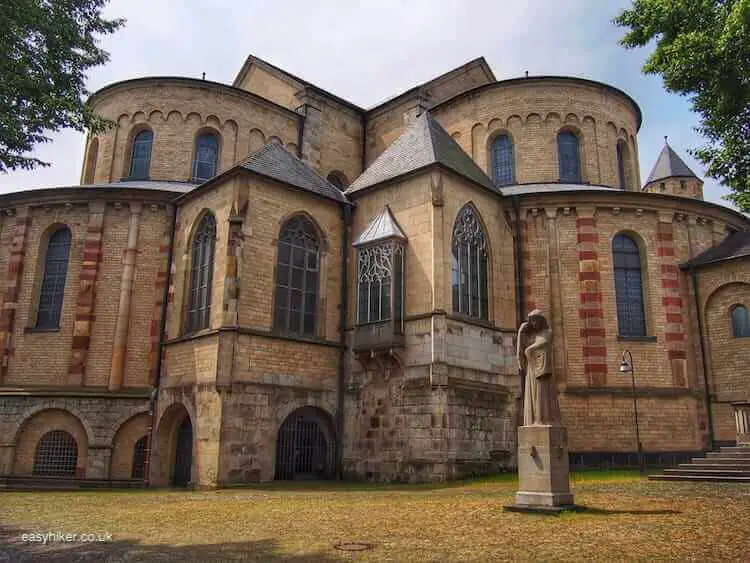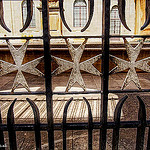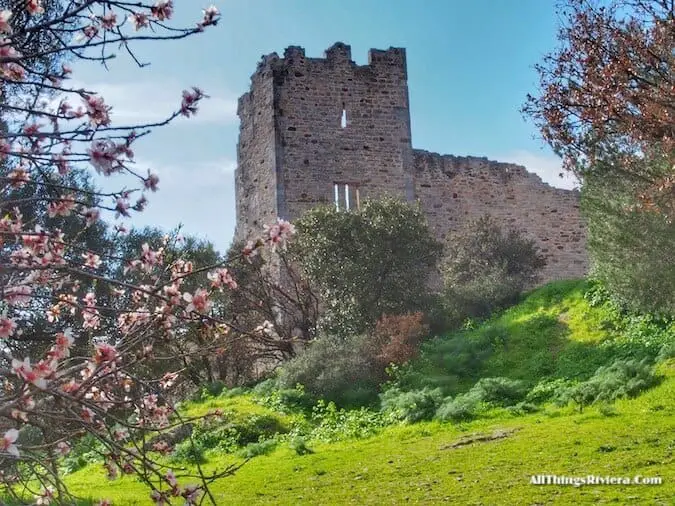Some of the world’s great streets have made that leap from being famous for what they are to being famous for what they may never have been.
Broadway houses many or perhaps even most of New York City’s playhouses, but its name has become synonymous for an entire type of theatre, and the Champs Elysees have evolved into a by-word for urban style and elegance.
London’s Fleet Street belongs in this group: it is not only famous as the traditional home of London’s newspapers but has grown into a shorthand expression for a certain type of journalism – cynical, sensationalist and sleazily glamorous.
Reality, of course, is always a different thing, at least contemporary reality. How does the myth of Fleet Street hold up in the bright daylight of a spring morning? That’s what we have come to find out today.
There are various ways of physically approaching Fleet Street, as many as there are underground and national rail stations in the vicinity.
We decided to walk to the “street of shame” from Holborn station, turning right into High Holborn and continuing past the hippogriff that marks the border between Westminster and the City of London …
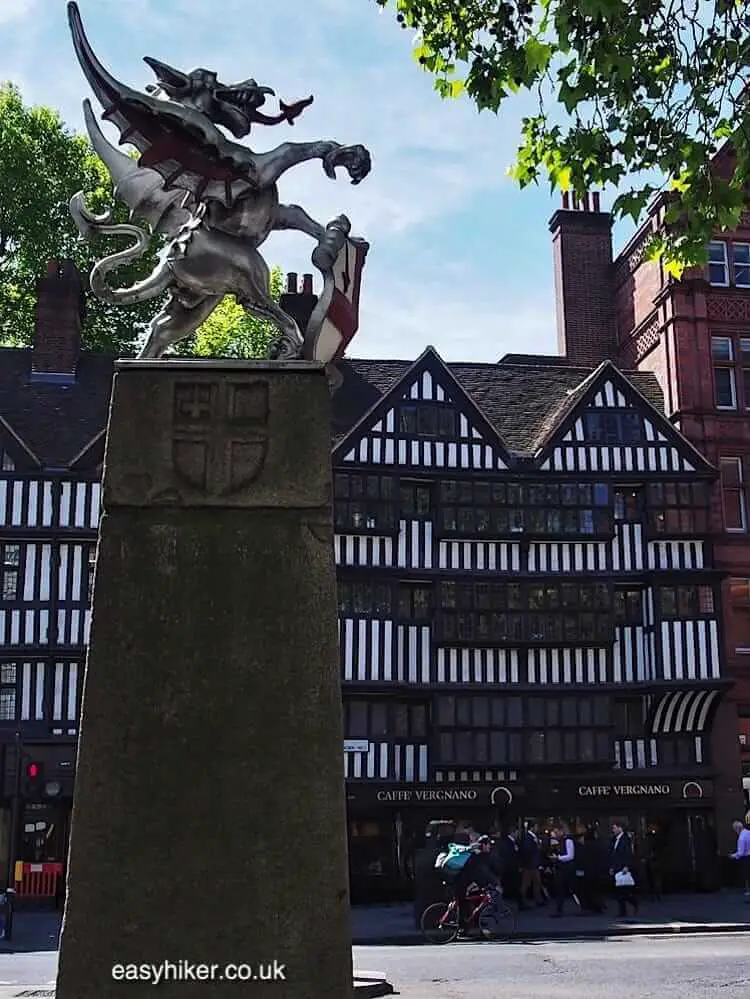
… up to the first stop of the itinerary, the former address of the Daily Mirror, Britain’s leading left-wing tabloid for almost a 100 years.
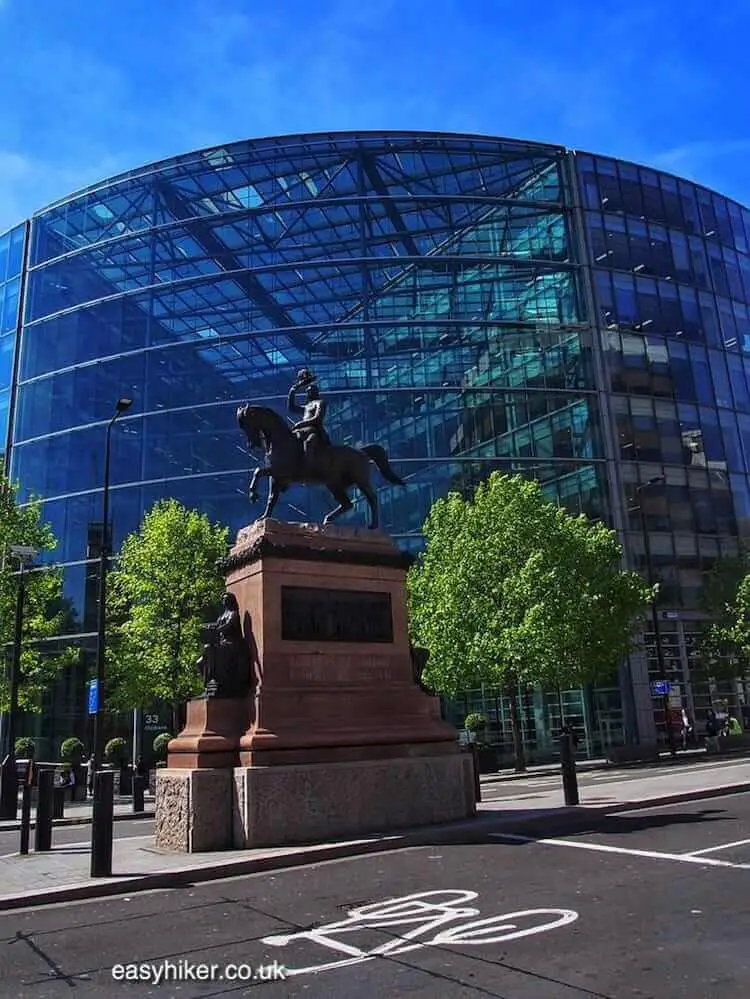
Mirror House, now demolished (the new building accommodates the HQ of supermarket chain Sainsbury’s), was built during the first great exodus from Fleet Street in the 1960s, the Golden Age of print journalism when the cramped offices and buildings of Fleet Street itself hampered further growth and several titles moved to the periphery of the area.
The history of the move is closely connected with the Mirror’s then owner Robert Maxwell, one of the Street’s most flamboyant press barons, who built his empire out of nothing and died when he fell off his yacht under circumstances that are still very much the subject of speculation and conjecture.
Turn right into Fetter Lane, passing the Pizza Express restaurant that used to house the pub where Mirror journalists met, charmingly – if no doubt appropriately – called The Stab in the Back.
Continue down Fetter Lane, where the world of Journalism meets the world of the Law, not for the last time on this walk (Fleet Street and the historic Temple district of lawyers are neighbours), until you meet Fleet Street head on. Start to explore the street and its surroundings by turning right here.
Then turn around and walk down the street in the opposite direction when you reach the Fleet Street hippogriff that marks the entrance to the City of London.
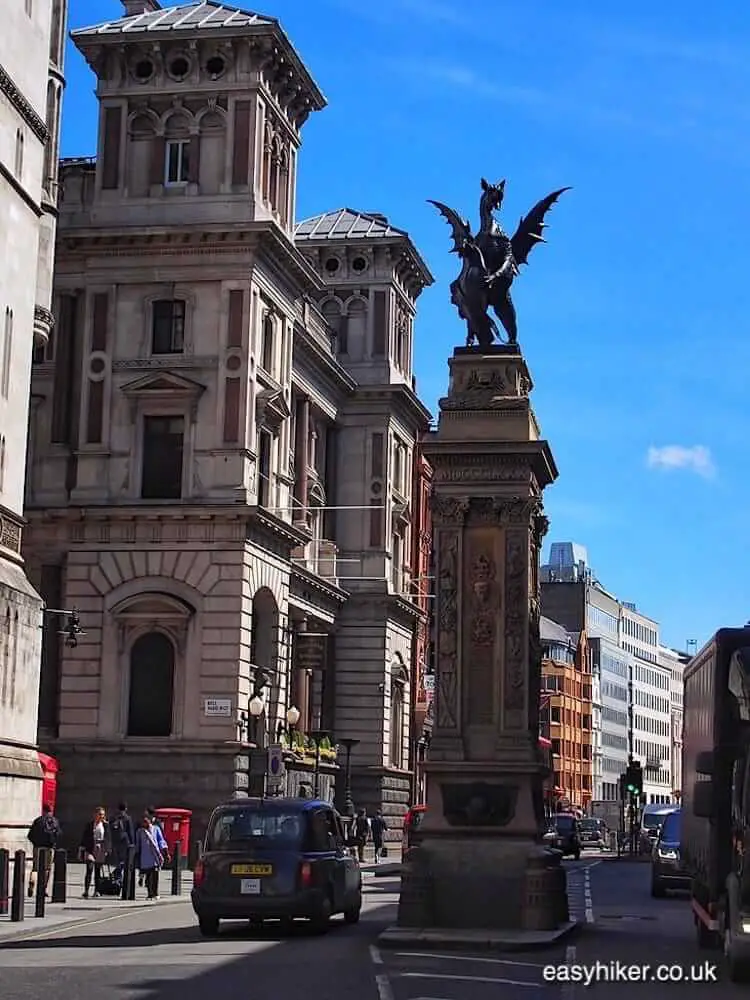
Fleet Street is relatively short, not more than a few hundreds metres long. Why did nearly all the country’s national print media choose this street as their domicile?
Nobody really knows the answer to that, but one reason is surely that journalists like the company of other journalists.
If so, they must – as a group – been happiest in the decades on either side of WWII when Fleet Street housed all the national newspapers while virtually all major provincial papers had a large office here.
Traces of their presence can still be found in the names on some of the house fronts …
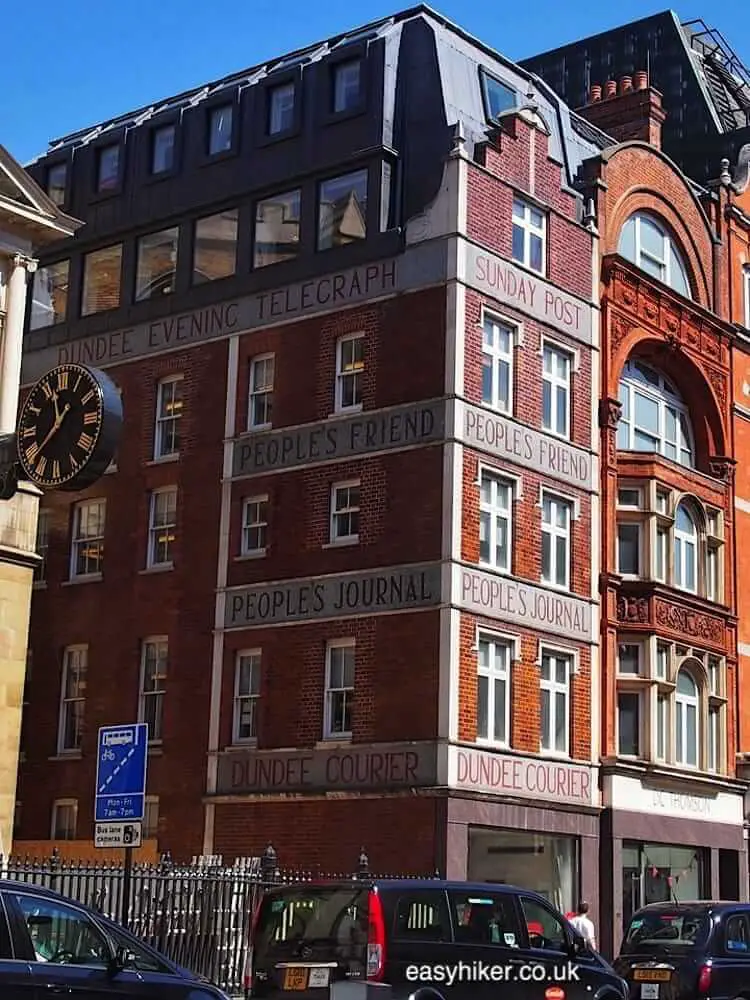
… and even in some of the buildings‘ ornaments: the saltire (the X on the Scottish flag) marks the spot where the Glasgow Herald once employed a dozen reporters and several sub-editors.
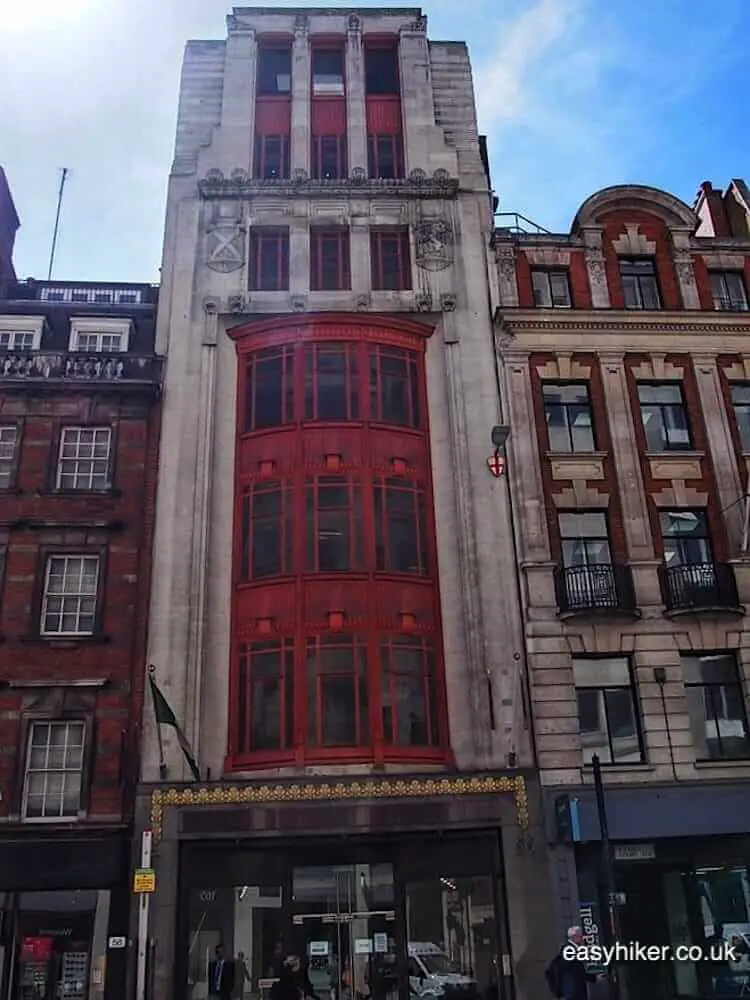
The last working journalists who left the street in 2016 also worked for provincial papers: two London correspondents of the Dundee-based Sunday Post.
But Fleet Street’s death-knell had already rung earlier: at the latest when Reuters left their London HQ of almost 80 years (in 2005) …
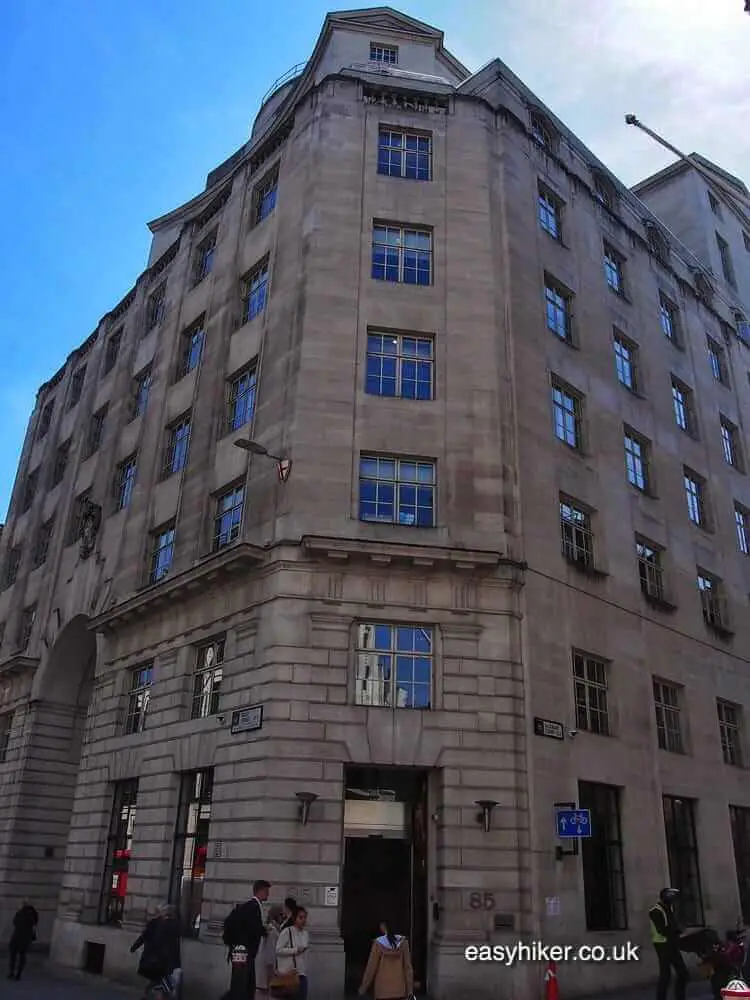
… but probably before that, in the mid-1980s, when Rupert Murdoch cleared out and concentrated all his newspapers outside of Central London in Wapping. Nowadays, the only print media produced on Fleet Street belong to the publisher D.C. Thompson – the maker of Britain’s favourite comics magazines including The Beano.
Fleet Street itself was largely the domain of the provincial papers who only needed offices for their editorial staff. The national papers required more space for their commercial staff and, above all, their printing presses.
Most of them resided in the side streets, mainly on the riverside, such as the Daily Mail in the vast Carmelite House complex (now occupied by the French publishing house Hachette).
For a bit of atmosphere, walk down narrow side lanes such as Bouverie Street, the former home of Rupert Murdoch’s tabloid The Sun.
In the street’s heyday, this warren of side streets would have been blocked by delivery vans for most of the day.
Hundreds of thousands of papers would have been shipped from here in the mornings, while in the afternoons, suppliers would bring in rolls of newsprint and barrels full of ink.
In the mornings, these alleyways would have been filled by the hum of the printing presses, and you would have been able to feel the vibrations of their movements under your feet. And all day as well as all night, the streets would have been immersed in the smell of ink.
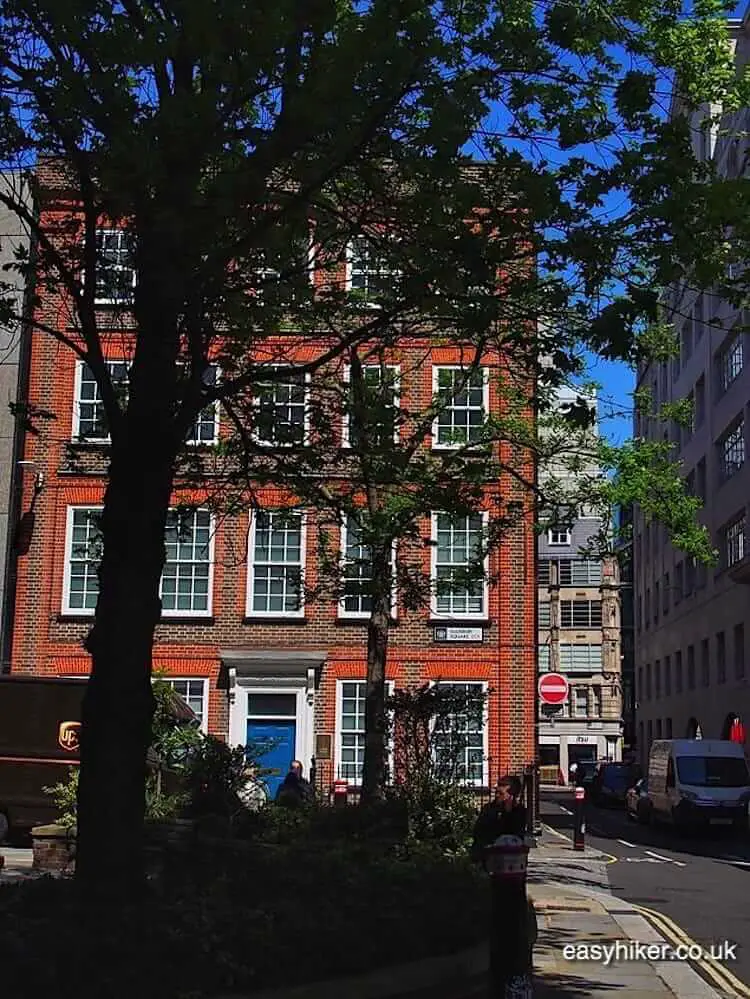
But ink was not the true lifeblood of Fleet Street: that would have been alcohol. Every paper had its own pub where its journalists would sit when they were not working (i.e.: virtually all day).
Many of these pubs still exist and cultivate their tradition, if only to sell it to the visitors who come to the street searching for some echo of its ancient myths.
One of the best remaining pubs is The Harrow on Whitefriars Street, …
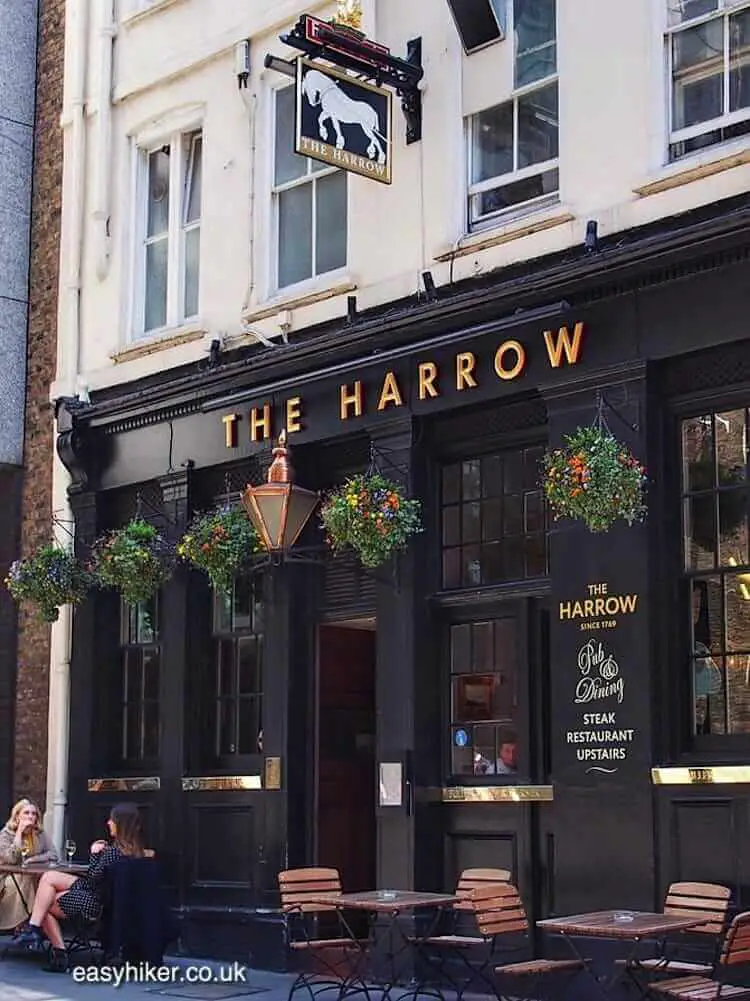
… the former haunt of the men from the Mail.
You may also have a look at El Vino on Fleet Street itself …
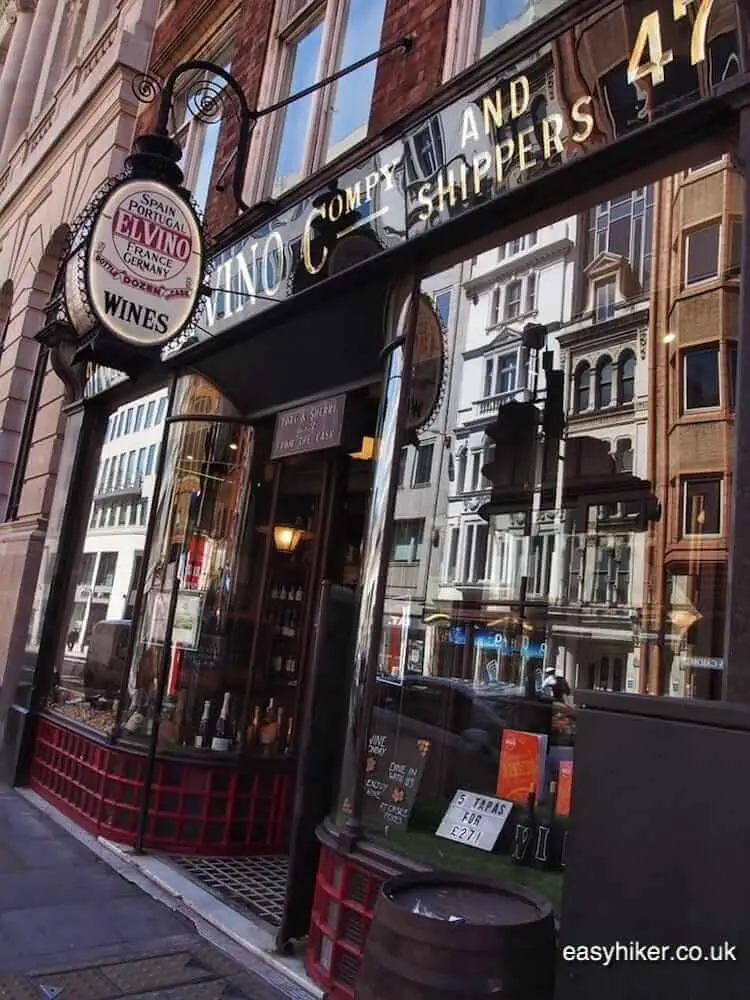
… where women were banned from the bar until 1982. Journalism was a man’s, man’s world back then.
Pass the mural on Bouverie Street that tells the entire history of the Street of Shame …
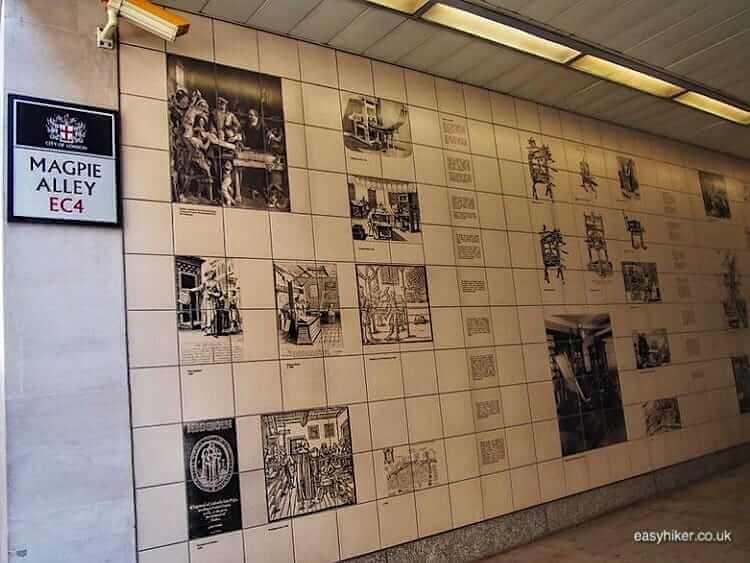
… on your way to the “Journalists‘ Church“ aka St Bride’s (on whose extravagant steeple, incidentally, the traditional wedding cake design was based) …
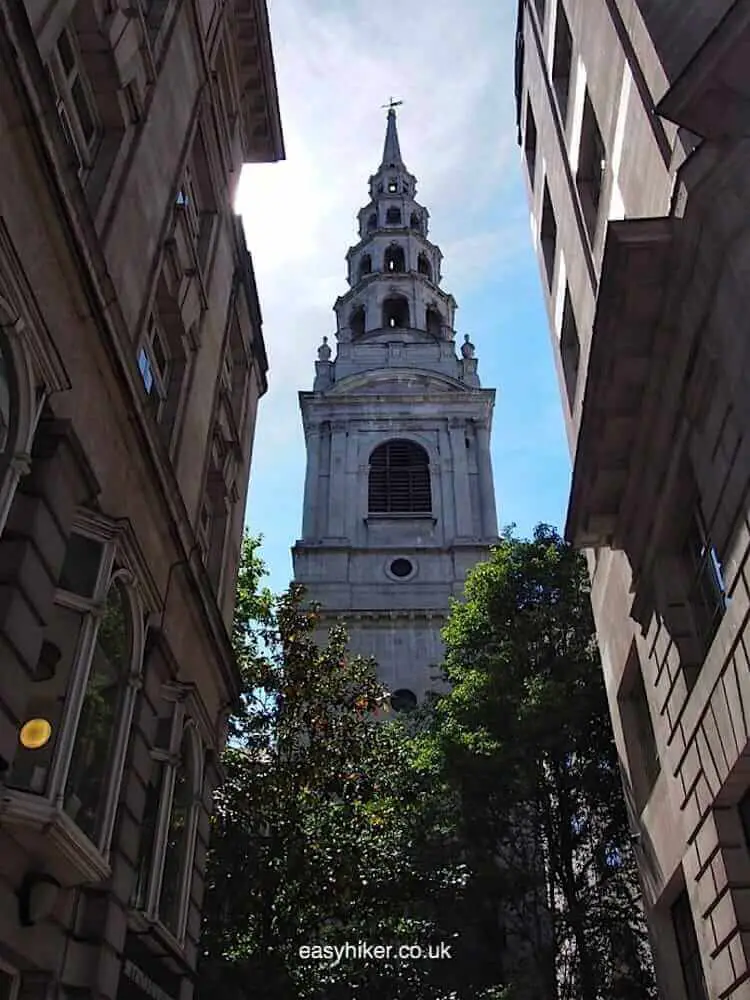
… and back to Fleet Street.
Buildings there you should not miss include Express House, built in 1932 as the home of Express newspapers …
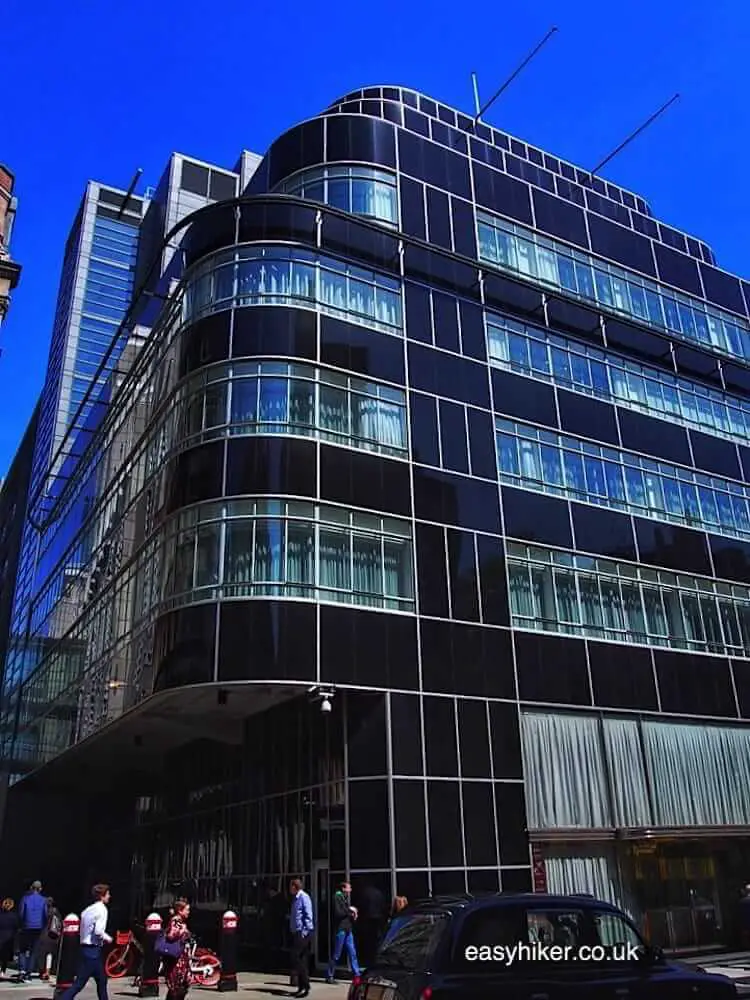
… and the bombastic Daily Telegraph building virtually next door.
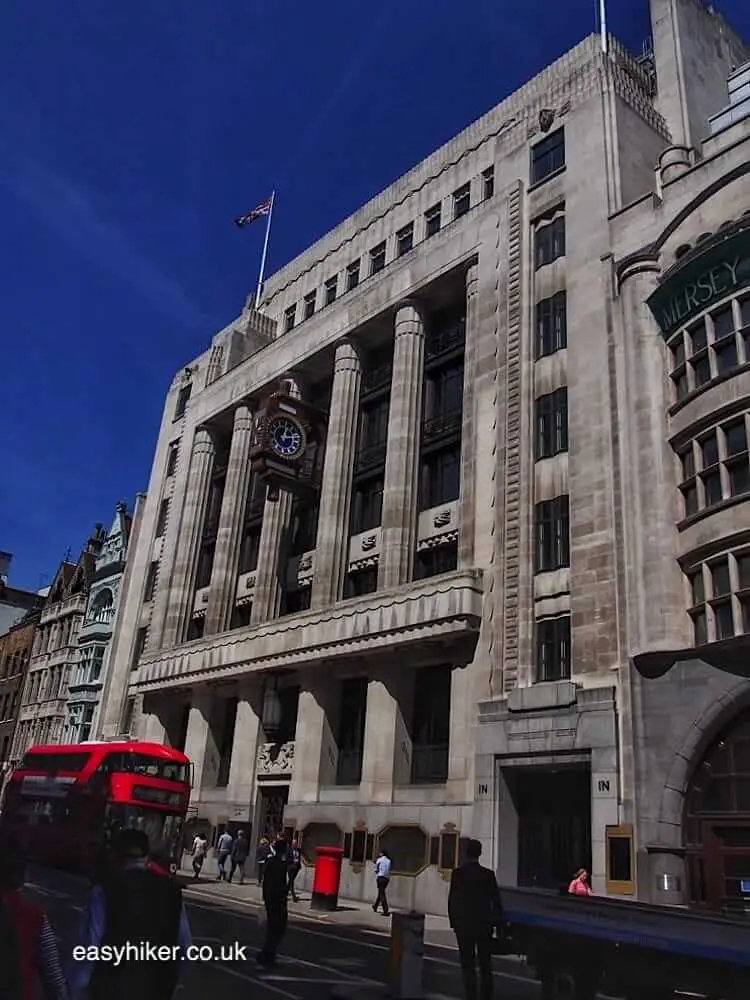
Both are now occupied by the investment bankers of Goldman Sachs. That pretty much sums up the way that Fleet Street has gone.
Walk into Ludgate Circus – with Farringdon Road on your left hand side, home of The Guardian when Britain’s organ of progressive liberalism moved its main office from Manchester to London in the early 1970s – and past St Paul’s Cathedral to Bracken House, which was built in 1950 to provide a home for the Financial Times.
Its architect was the eccentric Sir Albert Richardson who refused to install electricity in his own residence and was famous for welcoming dinner party guests in full Georgian attire, frilled collar and powdered wig.
The building was carefully designed to match and reflect the requirements of its inhabitants – so carefully that even the pink shade of its brick appears to mirror the famous hue of the papers‘ pages. It eventually became the first post-WWII building to be listed.
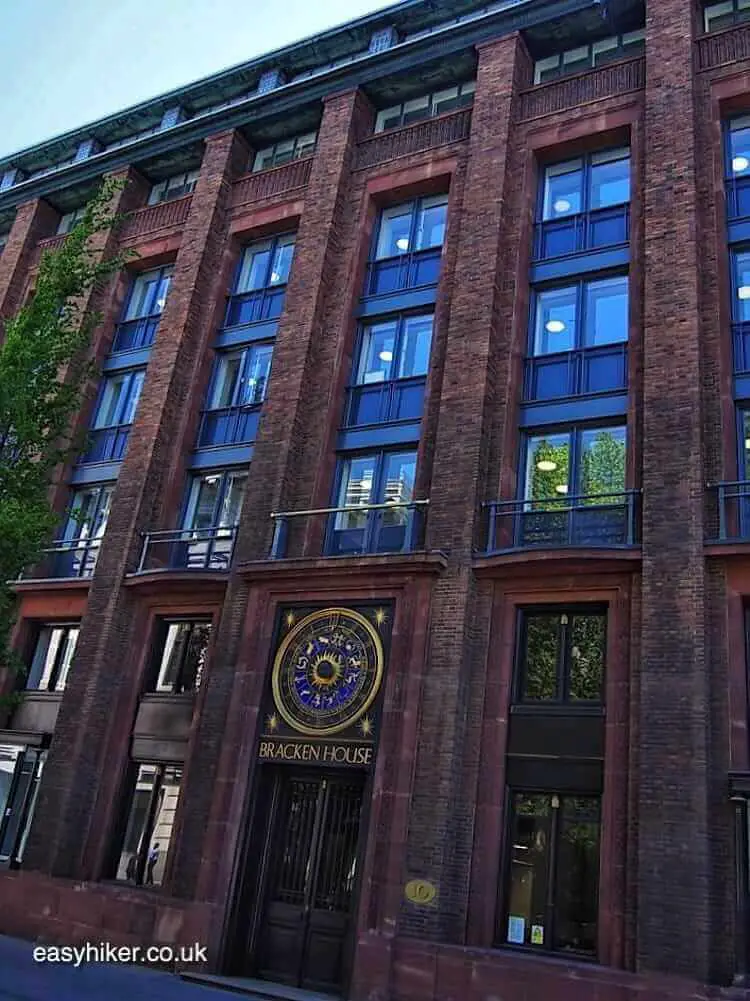
Bracken House is also a perfect place to end the walk since it has by now gone full circle. The Financial Times left its home in 1989 but has now come back: in May, in fact, virtually on the day before we went on this walk.
New technology forced the paper to leave and has now allowed it to return: the Internet has dispensed with the need for physical proximity of editing and printing.
Let’s be honest: where would you rather work? In an industrial wasteland miles out of Central London or in a place that is steeped in tradition and that features, on top of everything else, a roof garden with views over the Thames, Tate Modern and St Paul’s Cathedral?
There you go. Might this be the dawn of a new Golden Age for Fleet Street? Stranger things have happened.

